
To protect a sensitive device there are two different approaches. The first is to use series protectors, the second, parallel suppressors. The technologies used in both cases are such that the series devices are suitable for long duration surges, while parallel protectors are very efficient for the high current short duration stresses which represent the great majority of cases.
For the parallel protection solutions, two philosophies can be used. The first one is represented by a breakdown-based device and the second one by a breakover-based protector, known respectively, as the Transil and the Trisil.
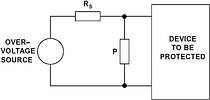
Transil/Trisil comparison
The Transil is a clamping device which suppresses all overvoltages above the breakdown voltage (VBR). (Figure 2a). The Trisil is a crowbar device which switches on when overvoltages rise up to the breakover voltage (±VBO). (Figure 2b)
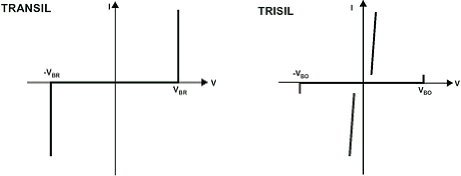
The Transil may be unidirectional (Figure 3a) or bidirectional (Figure 3b). In unidirectional form, it operates as a clamping device in one sense and like a rectifier in the other. The Trisil may be designed to function with a fixed breakover value (Figure 3c) or a value which can be programmed by the gate (Figure 3d).
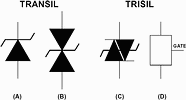
Electrical behaviour
For the same surge (a), Figure 4 shows the electrical behaviour of a Transil and a Trisil.
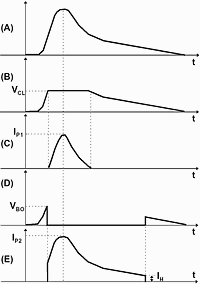
The parts (b) and (c) of Figure 4 give the voltage across the Transil and the current through it. It is important to note that the current flows through the protection device only during the clamping phase. This fact has to be taken into account when the protector is chosen, because the current duration is always shorter than that of the overvoltage surge.
The parts (d) and (e) of Figure 4 relate to the Trisil behaviour. In this case the device fires when the voltage across it reaches the breakdown voltage VBO and remains in the on-state until the current falls under the holding value IH. The current flows through the Trisil during all of the on-state phase.
Power dissipation
The dissipated power in both the Transil and the Trisil is due to the presence of voltage across and current through the protection device. Note that for the same package, the current-handling capability of a Transil depends on the breakdown voltage, whereas this is not the case for a Trisil. For example, with the CB429 package we have the Transil series 1.5KE and the Trisil family TPB which have different behaviour in terms of current suppression.
A look at Table 1 shows that the current rating of TPB devices is always 100 A whatever the VBR value, while it depends on the VBR for the 1.5KE series.
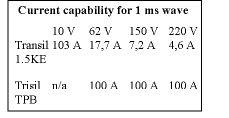
Summary
Table 2 summarises the different behaviour and advantages of both Transil and Trisil devices. It is not possible to say 'Transils are better than Trisils' or vice versa, only that their application areas are different. SGS-Thomson produces both types of devices meeting the widest protection requirements range.
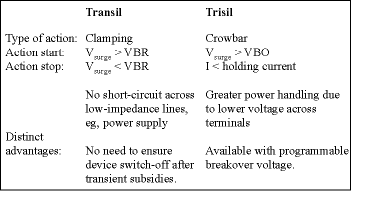
For more information contact Avnet Kopp, 011 809 6100, [email protected], www.avnet.co.za

© Technews Publishing (Pty) Ltd | All Rights Reserved